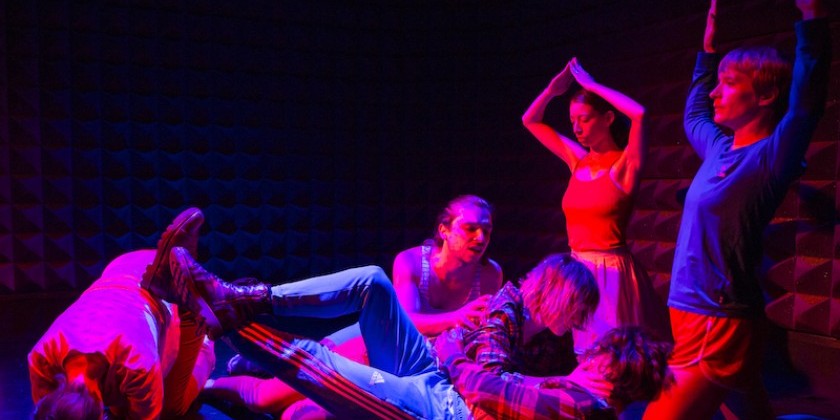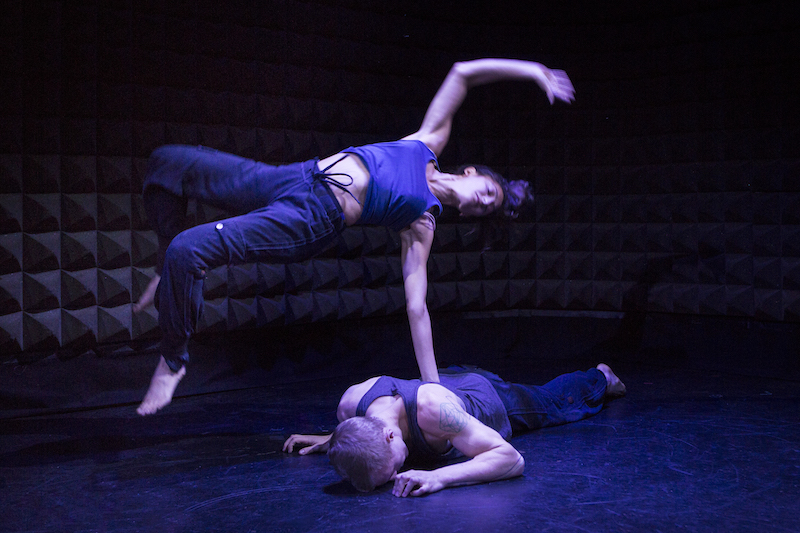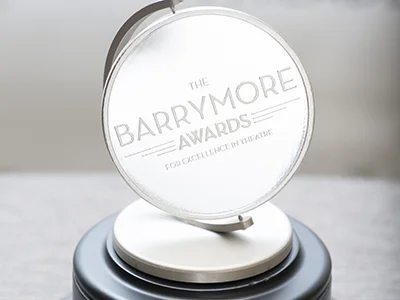#MeToo Part III: A Spotlight on Theatre
There’s an appeal to “celebrity cases.”
Last week I dug into the origins and implications of an infamous phrase in discourse about sexual assault: “boys will be boys.” It’s a defense of men who engage in damaging behavior, and as it turns out, some men more than others are especially awarded the “privilege” of such a defense, namely wealthier white men. Privilege is an issue that deeply affects #MeToo (as Part I made clear as well), which is why many of the most infamous perpetrators accused by the movement are men in power — and men in Hollywood.
#MeToo is so often brought up in the context of this industry that people just discovering the movement may think it’s solely addressing Hollywood. Obviously there’s an appeal to “celebrity cases”; the news isn’t going to cover just any average Americans impacted by #MeToo, they’re going to cover Harvey Weinstein and Kevin Spacey. And a majority of American celebrities are movie stars and filmmakers. Plus, related movement Time’s Up, made viral by the Oscars, has compounded this focus. But this begs the question: what does #MeToo look like in other entertainment industries?
So in this this final installment, I want to talk about #MeToo in a place most likely close to the heart of anyone reading this: theatre.
The cover of American Theatre’s September issue
Sexual misconduct in theatre
In September last year, American Theatre published what was, essentially, a #MeToo issue, using the phrase #TheatreToo for the same reasons I just discussed. I would highly recommend reading their collected #TheatreToo articles, several of which I will link throughout. Right now I am going to focus on what I see as a few key takeaways.
The first is, obviously, just how pervasive sexual assault and harassment are in theatre — that just because it’s not the most publicized impacted industry doesn’t mean it still does not suffer from the same systemic problem as everywhere else. Several of American Theatre’s articles refer to a Facebook post made by senior editor Diep Tran which asked for people to share their experiences after #MeToo had its big break; Tran received “an avalanche” of responses.
American Theatre, as well as an article by Theatre Art Life, detail some of the experiences of people working in theatre.
As a Stage Manager, I was asked to take my top off during a closed room rehearsal of a play that featured nudity so the male actor would feel more comfortable. When I politely declined I was called a prude.
Male Mech: “I didn’t think you would know how to handle a big drill” while I was constructing a set.
My first job as an Intern ASM I had a male production manager that used to grab me while my hands were in a sink washing dishes in what he considered “flirting”, he flicked buttons off my shirt when my hands were full of props and hugged for too long for comfort. This was all when no-one was around to witness it. The cherry on top was opening night he got drunk and told me that he would write a good reference for me if I slept with him; without it I would never succeed in the industry. Turns out I had my own Weinstein.
As a young ASM I was locked in a kitchen as a ‘joke’ by two male SMs for a full hour break because “that’s where I belonged”. I cried myself to sleep that night.
The stories, unsurprisingly but devastatingly, go on and on.
How theatre is different
Obviously theatre has the same deep-rooted issues as the rest of the entertainment industry — as the rest of the country — when it comes to sexual assault and harassment. But what makes theatre cases unique?
One of the differences between theatre and Hollywood is the respective reputations of the industries. Sure, they’re show business — but there is, historically, a percieved “sleaziness” beneath the glamor of Hollywood, embodied by men like Weinstein even before the allegations. Theatre, on the other hand, is contemporarily viewed in a different light. In a 2017 article written after her Facebook post called “Unmuffling the Culture of Silence”, Diep Tran says she was shocked by “the way well-meaning artists, ostensibly dedicated to promoting empathy, could turn around and abuse their fellow storytellers.” The generally witnessed liberalism, progressiveness, and artistry of theatre may sometimes, in the public eye, make it above the “Hollywood scandals.”
2016’s National Intimacy Month at Dance-mopolitan Shared Artist Series; photo by Yi-Chun Wu
But not only are theatre professionals just as likely to be victims — sexual harassment can be even trickier to identify. Tran describes the issue based on the responses she received, and cites power, of course, as a key danger — but especially points to the personal nature of theatre, writing, “In an industry where intimacy is acted out onstage, where an artist’s personal experiences are used as inspiration and discussed in the room as a kind of dramaturgy, and where showmances are common, the line between flirting and harassment can be blurry.”
Intimacy is acted out onstage…an artist’s personal experiences are…discussed in the room as a kind of dramaturgy.
She’s right — and that’s not the only issue where the intimacy of theatre becomes a problem; it’s also after the harassment takes place. Tran explains that most of the women and men who submitted stories to her requested to remain anonymous, because of the nature of the theatre industry being “much smaller and more localized” when specifically compared to Hollywood. Tran quotes New York director Rachel Dart, who explains: “We’re all friends, we all have to see each other all the time, we all go to each other’s shows, we’ve all dated each other...Everybody knows everybody, so if you report someone, everybody knows that you did it.”
The first thing that stood out to me when I first attended the Barrymores in 2017, and again this past fall, was just how close-knit a community Philadelphia’s seemed to be. It was nothing like the Oscars, where, from my vantage point at least, on the other side of the TV, these celebrities felt so disconnected from one another, so insincere. They’re their own separate, impossibly gorgeous entities, uncomfortably mingling. But every handshake and hug and laugh at the Barrymores seemed to come from such a different place. Sure, there’s schmoozing abound — but there’s also heart. And that’s because of the limited degrees of separation in a theatre community like Philadelphia’s. Those degrees of separation bring people together. They also can be disastrous for victims.
What theatre is doing
If victims feel unable to speak out, major changes need to happen in both the resources available to them, and harassment policies in the first place. One of the issues with policy is that many small theatre companies, local companies, community theatres, lack fully-fledged HR departments and so are far less equipped to deal. The nonprofit Actors Fund is an example of an organization that seeks to amend that problem by providing HR services (including counseling and legal) for any and all performing arts professionals.
In another article, though, Tran explains that “while legal action is usually available for more dire behavior, such as assault, there are fewer resources for people who experience microaggressions such as inappropriate comments.” Incidents like these are less legally “urgent”, and far easier to be trivialized and brushed aside, including by problematic theatre companies themselves, inside of which the microaggressions actually take place. That’s why some groups like Human Resources for the Arts want to provide mediation services involving third parties trained in conflict resolution.
Others like playwright Winter Miller and board member of FORCE: Upsetting Rape Culture believe there must be a way to report incidents to a place entirely outside of a theatre company and/or its member perpetrators, in case of dicier situations such as an artistic director being the offender.
But how do theaters address and navigate that “gray area” Tran discussed — the line between flirting and harassment in rehearsal rooms of uniquely intimate and personal performances? How is live, breathing theatre protected from human error, intentional or not, when it comes to sexuality?
Just as when acting out a script, there should not be a surprise line, when performing intimacy, there should not be a surprise kiss. Intimacy choreographer Siobhan Richardson at work
One solution is a job position that is rapidly gaining popularity and will inevitably continue to as #MeToo thrives on: intimacy choreographers. I’ll admit, I hadn’t heard this term until last year, but ever since I did, I’ve been hearing it more and more — and, to my excitement, seeing it in more and more programs. If you aren’t familiar, an intimacy choreographer is basically a mediator of on-stage consent during sex scenes and other forms of physical contact. I’ll again let somebody who knows more than I do explain.
“Just as when acting out a script,” Tran writes, “there should not be a surprise line, when performing intimacy…” She quotes intimacy choreographer Tonia Sina, “‘there should not be a surprise kiss. You can’t add choreography, because that’s actually assault in front of an audience.’ [Sina] sees her job as ‘everybody feels safe, everybody feels okay.’"
The cast of Profiles’ award-winning Killer Joe
One of the worst cases of sexual assault happening on stage was at the now-infamous Chicago Profiles Theater, which closed after the publishing an exposé in 2016, before #MeToo even took off. A Huffington Post article by Amanda Duberman on intimacy choreography explains that the theater, which for many years was known and praised for “raw, edgy performances involving nudity and sexually explicit content” was in fact showcasing real violence on stage. “Violent acts that audience members assumed were choreographed to avoid physical harm,” Duberman writes, “were, instead, on-stage beatings and sexual assaults.”
Horror stories like this are why intimacy choreographers are so crucial right now. Will intimacy choreography stop a predatory actor from breaking those barriers of consent? Unfortunately, not always. But it begins a conversation, it provides a platform for discussion of specific and mutual consent and the erasure of gray area, and it serves as an ongoing and direct reminder that the rehearsal room should — no matter what the material, no matter what the physicality — be a safe space.
Just as #MeToo has seen some changes to the landscape of Hollywood (albeit not as radically as one might hope), theatre is changing too. Several theaters, such as in Houston, Minneapolis, and Dallas have fired offenders, or had offenders resign. Organizations like American Theatre are investigating and reporting on the systemic issue, and doing work to provide for victims and survivors, such as this “comprehensive list of resources for organizations and for those who have suffered abuse and feel that they have no resource.” Discussions have begun. Now they just need to keep up their momentum.
And that’s the case for all of #MeToo. Like any social movement, its success in making change depends on people continuing the conversation. Not every time a new celebrity is accused, not every time an article pops up on Facebook — but constantly. Hopefully, that also leads to improvements in the movement; hopefully #MeToo extends to sex workers, to more people of color, to incarcerated women and victims of the police. Hopefully we examine not only the problem but the culture in which it exists — one of “boys will be boys” and “locker room talk.” And hopefully, no industry will steal the spotlight from any other — because this problem runs deep. There are victims everywhere.
Thank you for reading the #MeToo series. And please — keep the conversation going.
- Lucas









